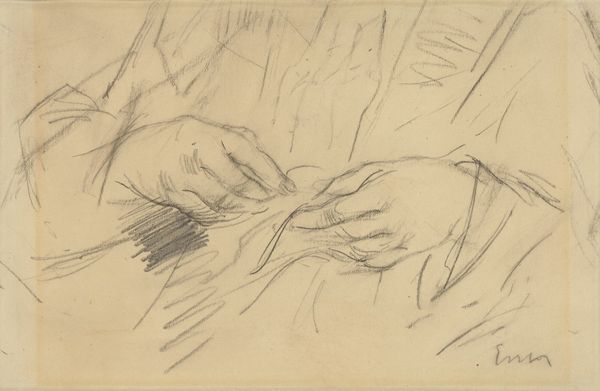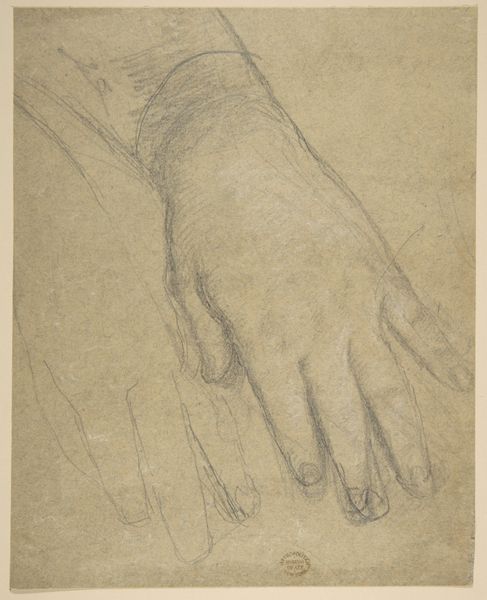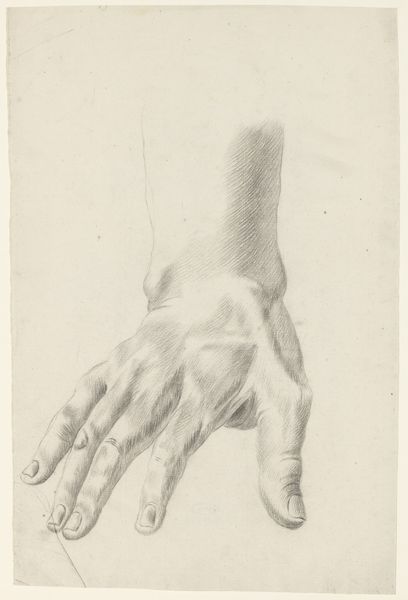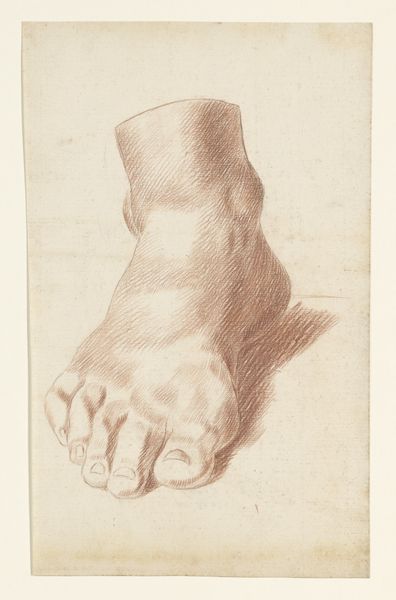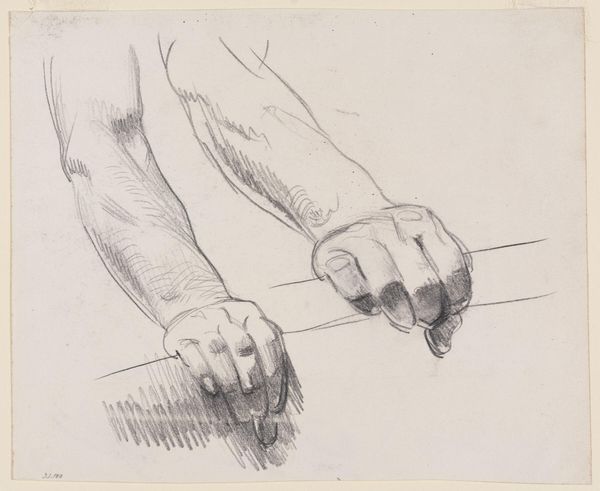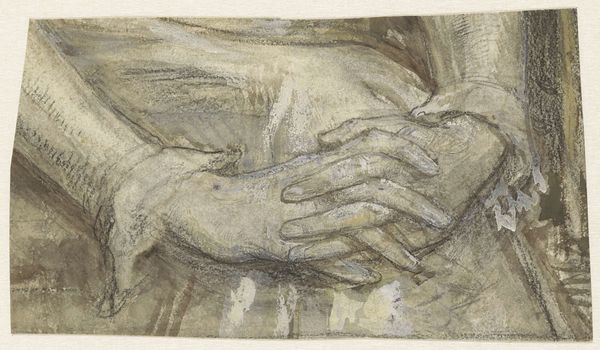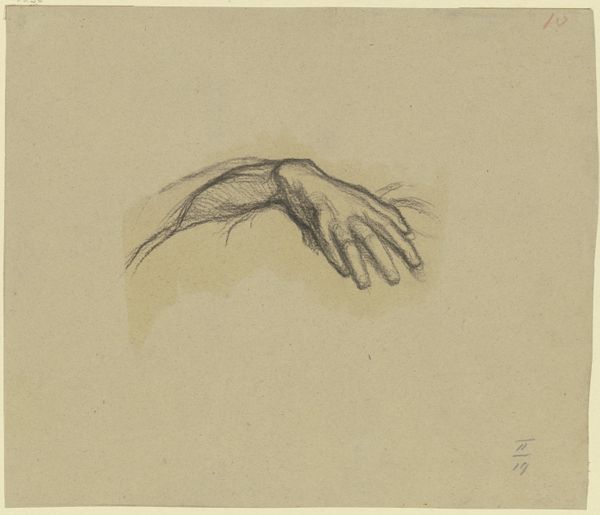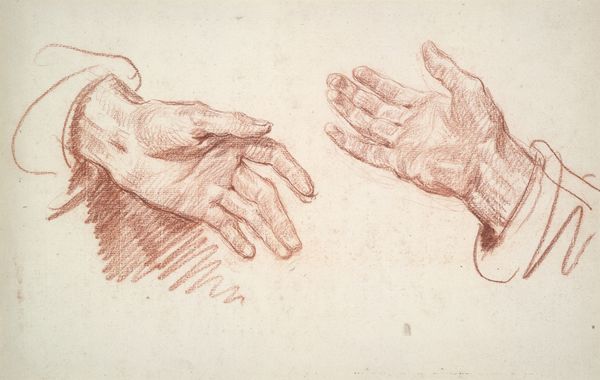
Study of Hands for "Christ Among the Doctors" 1852 - 1862
0:00
0:00
drawing, pencil
#
portrait
#
drawing
#
pencil sketch
#
figuration
#
pencil drawing
#
pencil
#
academic-art
#
realism
Dimensions: Sheet: 4 3/8 × 4 7/16 in. (11.1 × 11.3 cm)
Copyright: Public Domain
Editor: This is a pencil drawing from sometime between 1852 and 1862. Ingres, Jean-Auguste-Dominique Ingres created "Study of Hands for \"Christ Among the Doctors\"". The realism is striking, but it feels incomplete, like a fragment. What strikes you about these hands? Curator: Hands are fascinating, aren’t they? More than just appendages, they are incredibly symbolic. Ingres captures a moment of contemplation through gesture. Consider how the language of hands differs across cultures and eras. Are they open or closed, gesturing, praying, working? Editor: They do look very deliberate, almost tense. Is that tension symbolic? Curator: Absolutely. Hands speak volumes – literally and figuratively. Here, the strong modeling indicates purpose, power. Think about the historical and religious context: Jesus, a young man confronting religious scholars. Are these hands assertive, or perhaps anxious? Ingres, by focusing on hands, highlights the active discourse in play in the depicted scene. How does Ingres want to highlight the humanity and intent behind these symbolic images? Editor: So, the tension I perceived could reflect the gravity of the situation depicted in the intended painting? Curator: Precisely. And consider Ingres’s academic style: realism is employed, not for its own sake, but to imbue these figures with both immediacy and a timeless quality, an important cultural memory. We see the importance through detailed and realistic rendering of the hands, creating a connection that transcends time. It asks us to reach back. Editor: I didn't realize how much information a simple study of hands could convey! Thanks, it offers an interesting look at Ingres' broader goals for this art. Curator: My pleasure! It’s a beautiful reminder of how artists use even the smallest details to evoke complex ideas and emotional responses.
Comments
No comments
Be the first to comment and join the conversation on the ultimate creative platform.
